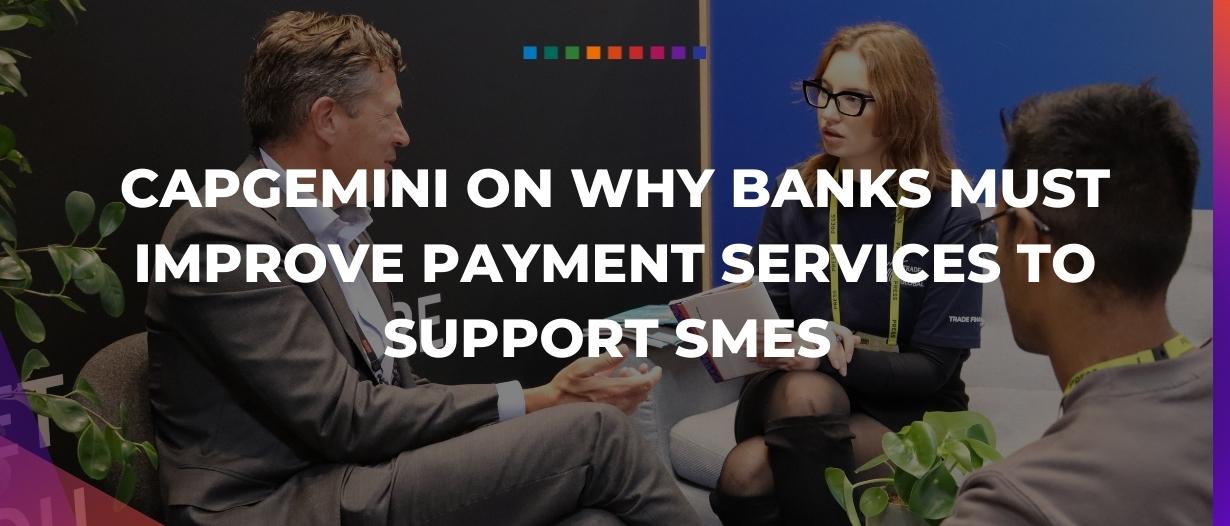Estimated reading time: 4 minutes
Capgemini’s 2022 World Payments Report finds that 89% of small and medium businesses (SMEs) are considering switching to challenger banks and alternative PayTech providers.
Market volatility. It affects everyone, but who are those that are most disproportionately impacted.
Overwhelmingly the answer seems to be small- and medium-sized enterprises (SMEs). The story is no different in the payments industry, with many banks failing to provide support needed for SMEs.
The additional looming threat of recession and growing inflation rates, coupled with continuing geopolitical issues is posing a whole host of new challenges.
The Capgemini Research Institute’s World Payments Report 2022, found that new payment methods are still expected to increase from around 17% of total non-cash transactions in 2021 to around 24% by 2026. However, while B2C payments have flourished, the B2B value chain has too often been neglected.
According to the report, despite promising post-pandemic recovery levels, SMEs are continuing to struggle with cash flow issues and conversion cycles, stunting the next phase of growth for many. This has led to rising demands for payment service providers to step up, realign their priorities and assemble the right tools to help SMEs to explore new market opportunities.
In an exclusive interview with Trade Finance Global (TFG), Jeroen Hölscher, global head of the payments and cards segment at Capgemini said, “The largest challenge for small businesses in profitability, the fact that the infrastructure is not elastic, with need for regulatory compliance.”
Delving deeper into these issues Hölscher elaborated on the position of SMEs in the ecosystem. SMEs do not fit neatly into the consumer side, nor do they really align with larger corporates.
So, the trouble comes first and foremost in the grey area of SMEs’ parameters.
Hölscher added, “We need to transform the solution landscape at scale.”
In doing so, the industry can truly help facilitate better cash flow, and more support to SMEs.

Assembling the right building blocks to enhance SME journeys
While the SME market segment is now worth upwards of $850 billion worldwide, cites the report, SMEs are still often overlooked in favor of larger corporate accounts and the bigger retail market by the legacy banking industry.
As a result, SMEs commonly struggle with cash flow issues, cybersecurity risks, poor liquidity and operational inefficiencies that are fueling the existing discontent with incumbent payment service providers. In fact, 89% of SMEs surveyed feel underserved by their primary banks and are considering a shift to a more accommodating alternative PayTech challenger.
A shift towards a digital payment provider would allow SMEs to reflect the trend that is already underway in consumer markets. For example, the report found that worldwide B2B non-cash transactions are expected to increase at a CAGR of ~10% during 2021-2026.
To win back SME loyalty, banks will have to amplify platform value which can only be unlocked through tackling restrictive legacy systems currently stifling growth.
The report found that more than a quarter of banks struggle with monolithic and inflexible infrastructures, with 75% of the executives prioritising costs towards keeping current systems running over innovating new value propositions––a clear barrier to needed investments in innovation and flexibility that SMEs crave.
Instead, payment firms should embrace composability which lets them select and assemble building blocks in various combinations to satisfy customer requirements. In doing so, firms can configure their offerings to best align with SME needs, powered by harmonised data, to deliver a unified value proposition by enabling payment firms to build B2B marketplaces for SMEs.

Explore new payment possibilities through DLT solutions
Within the wealth of innovative technologies being adopted by banks to stay in the game, Distributed Ledger Technology (DLT) is emerging as a pivotal advantage for thriving in the age of seamless value exchange. While many banks and payment service providers (PSPs) agree on its potential to transform the industry, adoption will remain cautiously steady as stretched resources continue to limit investment opportunities. As the market evolves and PSPs begin exploring this new technology, the report depicts multiple potential routes forward.
64% of SMEs believe DLT could emerge as a viable complimentary option to existing payment networks as B2B cross-border transactions on the blockchain continue to grow alongside cryptocurrency traction. As a result, DLT can be considered as a part of a multi-rail foundation strategy to better support these global and regional payment networks.
Similarly, the rapid rise of more unregulated crypto assets has led many banks to explore the opportunities deriving from central bank digital currency (CBDC). Finally, the report highlights that those looking to become industry frontrunners are already scaling DLT use cases for the next wave of growth opportunities.
























